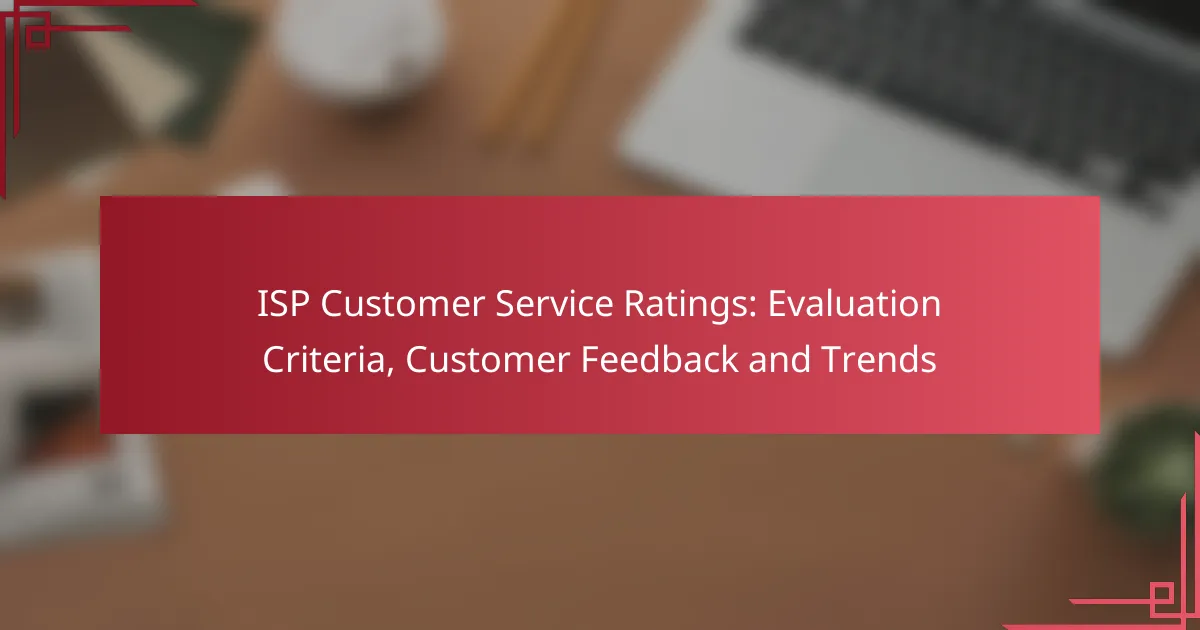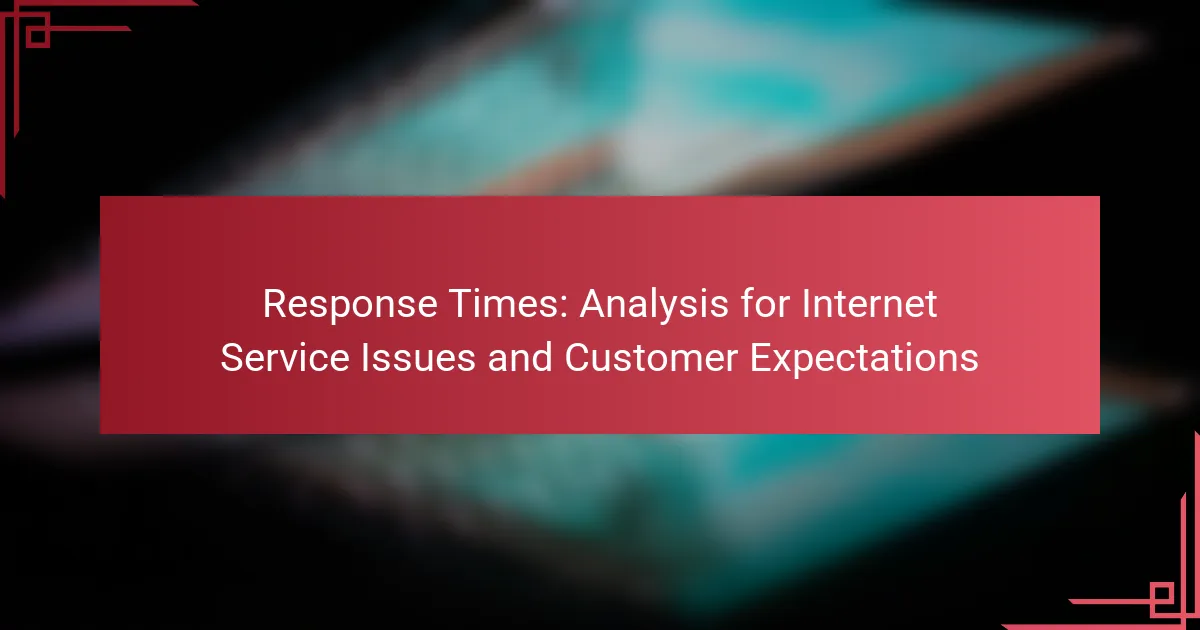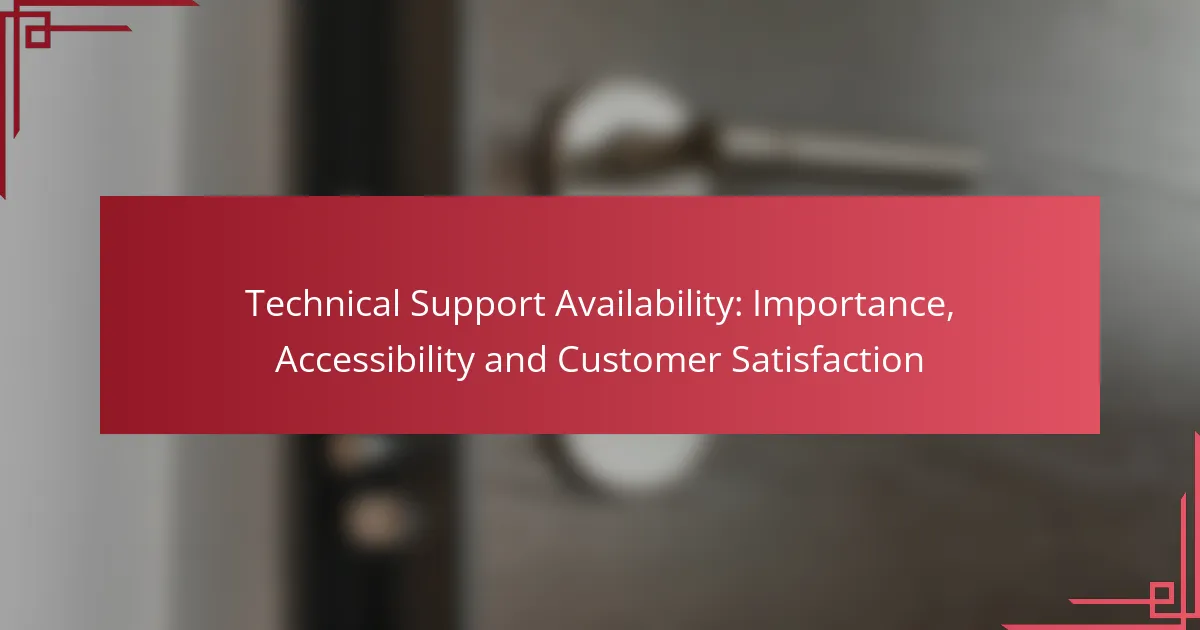In the competitive landscape of internet service providers (ISPs), customer service ratings play a crucial role in determining overall satisfaction. Providers like Verizon Fios, Xfinity, and Spectrum often lead the pack by excelling in responsiveness and problem resolution. As ISPs continuously assess customer feedback and performance metrics, they adapt to emerging trends that emphasize personalized support and proactive communication, aiming to enhance the customer experience.
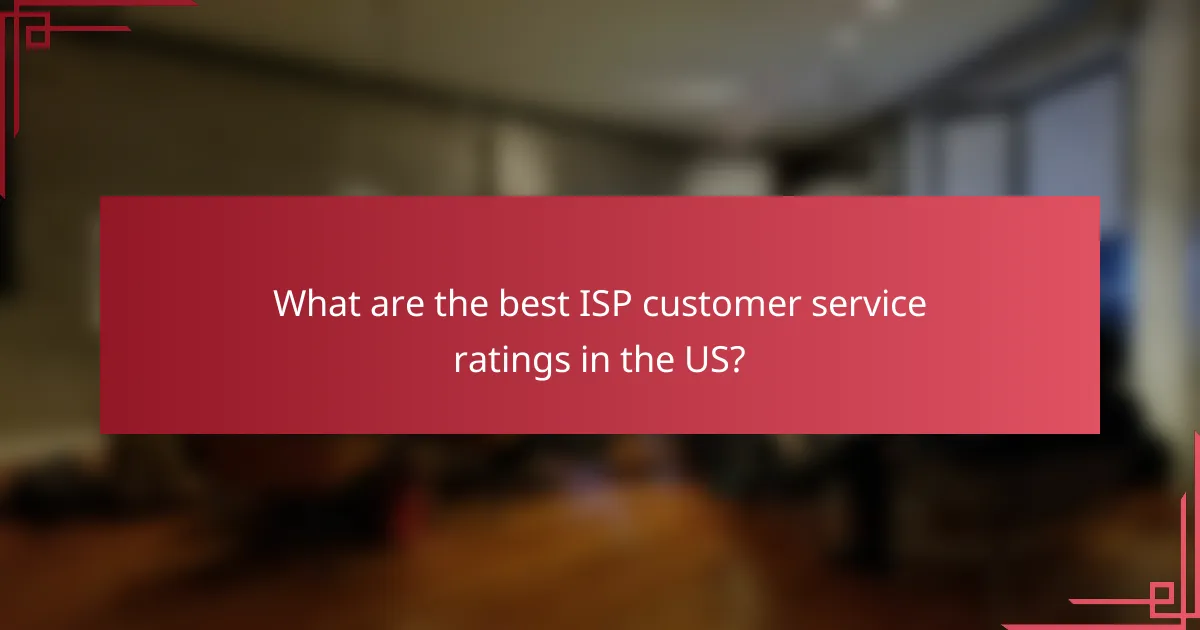
What are the best ISP customer service ratings in the US?
The best ISP customer service ratings in the US are typically awarded to providers that consistently receive high marks for responsiveness, problem resolution, and overall customer satisfaction. Companies like Verizon Fios, Xfinity, and Spectrum often emerge as top contenders based on customer feedback and independent surveys.
Top-rated ISPs based on customer feedback
Verizon Fios frequently ranks at the top of customer service ratings due to its fast response times and effective support. Xfinity also receives positive reviews, particularly for its online support options and proactive communication. Spectrum, while sometimes criticized for pricing, has improved its customer service ratings significantly in recent years.
Other notable mentions include AT&T and Cox, which have made strides in enhancing their customer service experiences. Customer feedback often highlights the importance of knowledgeable representatives and the ease of accessing support services.
Comparison of customer service ratings
When comparing customer service ratings among ISPs, it’s essential to look at various factors such as response time, issue resolution rates, and customer satisfaction surveys. For instance, Verizon Fios often scores above 80% in customer satisfaction, while Xfinity and Spectrum typically hover around the mid-70s.
Many independent review platforms aggregate customer feedback, making it easier to compare these ratings. Checking multiple sources can provide a more comprehensive view of an ISP’s performance in customer service.
Impact of customer service on ISP choice
Customer service plays a crucial role in the decision-making process when selecting an ISP. A provider with high customer service ratings can lead to a smoother experience, especially during installation and troubleshooting. Many customers prioritize support availability and responsiveness over pricing when choosing their ISP.
Additionally, poor customer service experiences can lead to higher churn rates, as dissatisfied customers are more likely to switch providers. Therefore, considering customer service ratings can be as important as evaluating speed and pricing when making a choice.
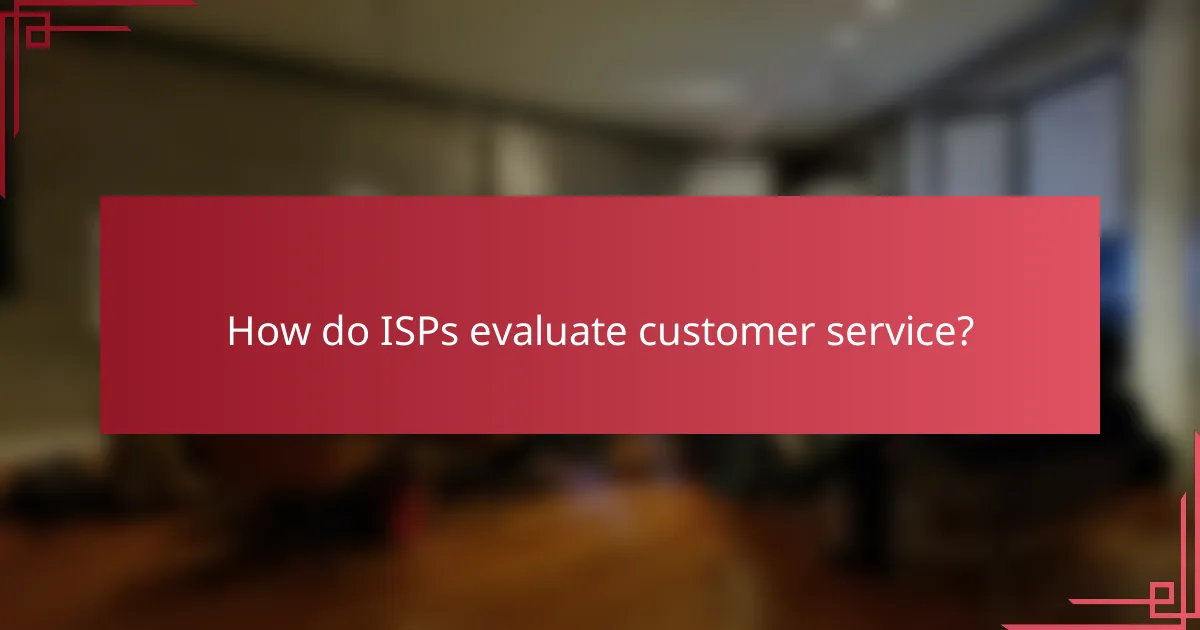
How do ISPs evaluate customer service?
ISPs evaluate customer service through a combination of customer feedback, performance metrics, and adherence to industry standards. This evaluation helps them identify strengths and weaknesses in their service delivery, ultimately aiming to enhance customer satisfaction and retention.
Key evaluation criteria for ISPs
ISPs typically assess customer service based on several key criteria, including response time, resolution rate, and customer satisfaction scores. Response time measures how quickly customer inquiries are addressed, while resolution rate indicates the percentage of issues resolved on the first contact.
Customer satisfaction scores are often gathered through surveys and feedback forms, providing insights into the overall experience customers have with the service. Additionally, metrics such as Net Promoter Score (NPS) can help gauge customer loyalty and likelihood to recommend the service to others.
Industry standards for customer service
Industry standards for customer service in the ISP sector are often guided by best practices and regulatory requirements. Organizations like the Federal Communications Commission (FCC) in the United States set benchmarks for service quality, including response times and complaint resolution processes.
ISPs may also adopt standards from customer service frameworks such as ITIL or ISO 20000, which emphasize continuous improvement and customer focus. Adhering to these standards not only enhances service quality but can also improve a company’s reputation and competitiveness in the market.
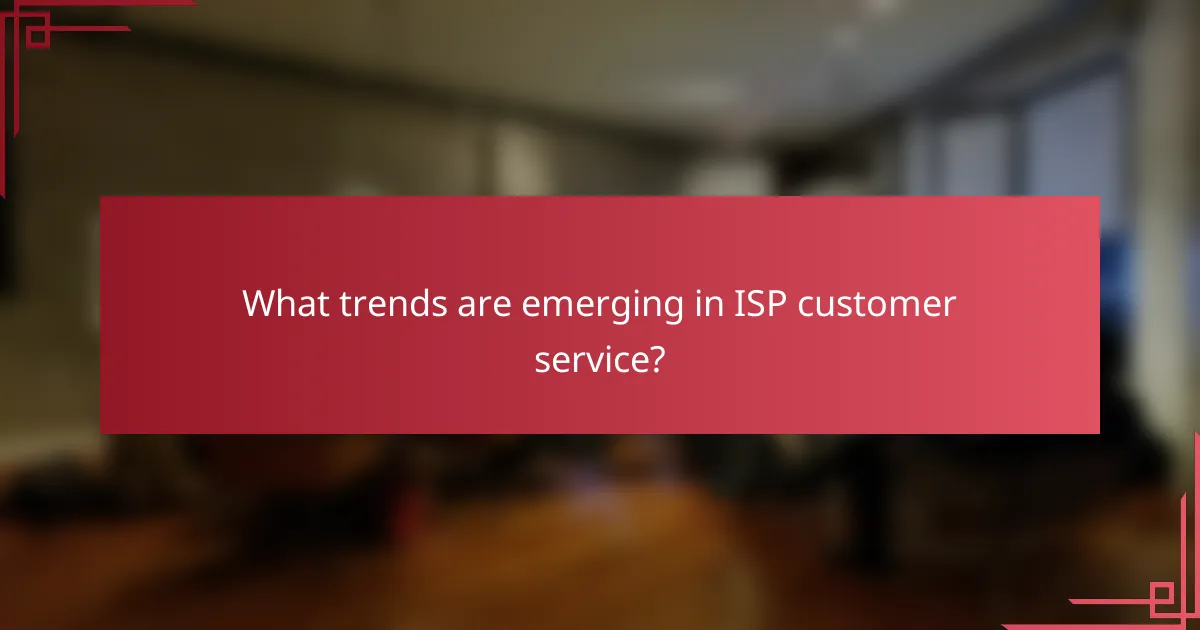
What trends are emerging in ISP customer service?
Emerging trends in ISP customer service highlight a shift towards more responsive and personalized support. Customers increasingly expect timely resolutions and proactive communication from their internet service providers.
Recent shifts in customer expectations
Customers now prioritize quick and effective service, often expecting responses within minutes rather than hours. This shift is driven by the rise of instant communication channels like live chat and social media, where immediate feedback is the norm.
Moreover, consumers are seeking more personalized experiences, including tailored solutions based on their unique needs. ISPs that fail to adapt may find themselves losing customers to competitors who offer better service quality.
Technological advancements in customer support
Technological innovations are transforming ISP customer support, with AI and chatbots playing a significant role. These tools can handle routine inquiries efficiently, allowing human agents to focus on more complex issues.
Additionally, data analytics enables ISPs to anticipate customer needs and identify potential problems before they escalate. By leveraging technology, providers can enhance customer satisfaction and streamline their support processes.

What factors influence ISP customer service ratings?
ISP customer service ratings are influenced by several key factors, including response times, resolution rates, and overall customer satisfaction. These elements play a crucial role in shaping customer perceptions and experiences with their internet service providers.
Response time and resolution rates
Response time refers to how quickly an ISP acknowledges a customer’s inquiry or issue, while resolution rates indicate the percentage of issues successfully resolved. Fast response times, typically within a few minutes, can significantly enhance customer satisfaction, as users feel valued and prioritized.
ISPs often aim for high resolution rates, ideally above 80%, to ensure that most customer issues are addressed effectively. A low resolution rate can lead to frustration and negative perceptions, making it essential for ISPs to invest in training and resources for their support teams.
Customer satisfaction surveys
Customer satisfaction surveys are a vital tool for ISPs to gauge how well they are meeting customer expectations. These surveys often include questions about response time, issue resolution, and overall service quality, providing valuable feedback for improvement.
ISPs typically analyze survey results to identify trends and areas needing attention. High satisfaction scores can lead to better customer retention and positive word-of-mouth, while low scores may prompt ISPs to reevaluate their service strategies and implement necessary changes.
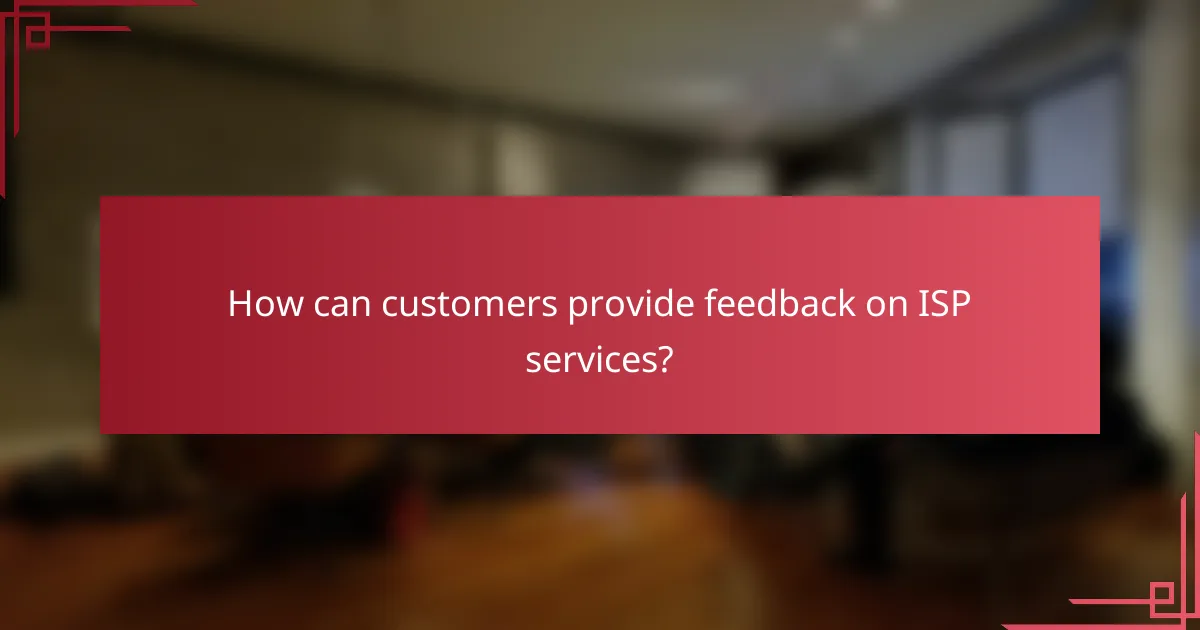
How can customers provide feedback on ISP services?
Customers can provide feedback on ISP services through various channels, including online surveys, customer service calls, and social media platforms. These methods allow users to share their experiences and opinions, which can significantly influence ISP performance and service improvements.
Methods for submitting customer feedback
There are several effective methods for customers to submit feedback about their ISP services. Online surveys are commonly sent via email or available on the ISP’s website, allowing for quick responses. Additionally, customers can call customer service representatives to voice their concerns directly, or use social media to publicly share their experiences.
Some ISPs also offer dedicated feedback forms on their websites, where users can detail their issues or suggestions. Utilizing these methods ensures that customer voices are heard and can lead to tangible changes in service quality.
Importance of customer reviews
Customer reviews play a crucial role in shaping the reputation of ISPs. Positive feedback can enhance an ISP’s credibility, while negative reviews can highlight areas needing improvement. This feedback loop is essential for ISPs to understand customer satisfaction and adjust their services accordingly.
Moreover, potential customers often rely on existing reviews to make informed decisions when selecting an ISP. High ratings and positive testimonials can significantly influence their choice, making it vital for ISPs to prioritize customer feedback and strive for better service delivery.
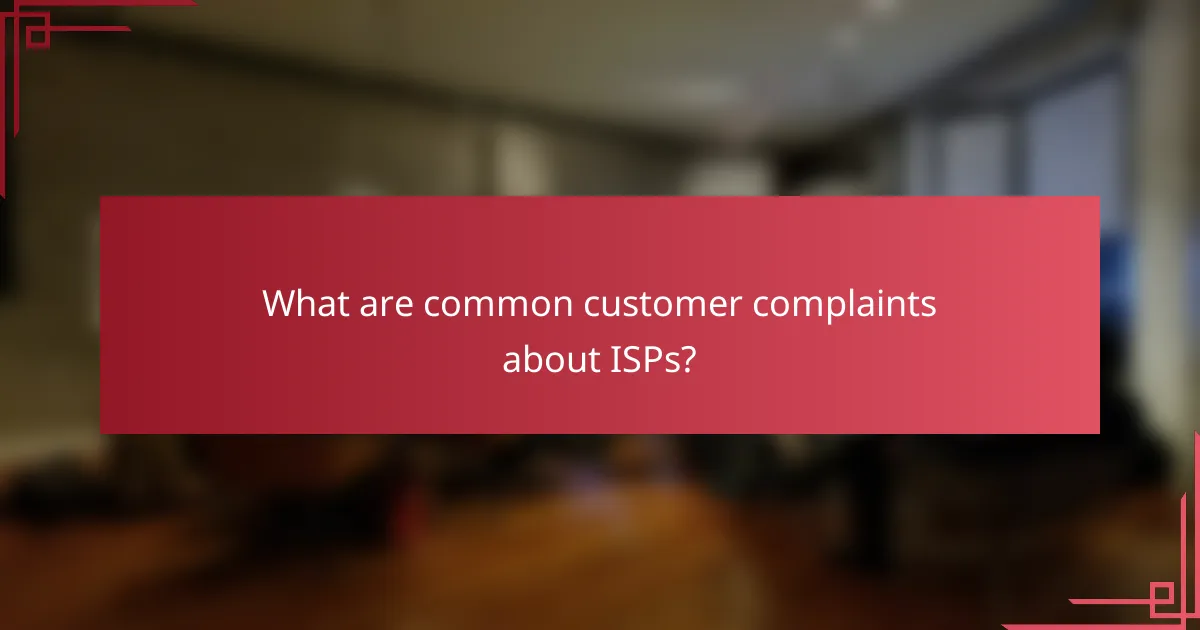
What are common customer complaints about ISPs?
Common customer complaints about ISPs typically include issues with service reliability, slow internet speeds, and poor customer support. These problems can significantly impact user satisfaction and overall perceptions of the ISP.
Frequent issues reported by customers
Customers often report connectivity problems, such as frequent outages or slow speeds that do not match advertised rates. Additionally, billing issues, including unexpected charges or difficulties in understanding bills, are common grievances.
Long wait times for customer service and unhelpful support representatives further exacerbate frustrations. Many users express dissatisfaction with the lack of transparency regarding service limitations and terms of service.
How complaints affect ISP ratings
Complaints play a crucial role in shaping ISP ratings, as they directly influence customer satisfaction scores and public perception. ISPs with higher complaint rates often receive lower ratings on review platforms and consumer reports.
Negative feedback can lead to a decrease in new customer acquisitions and increased churn rates, as potential customers may opt for competitors with better reputations. ISPs that actively address and resolve complaints tend to improve their ratings over time, demonstrating the importance of responsive customer service.
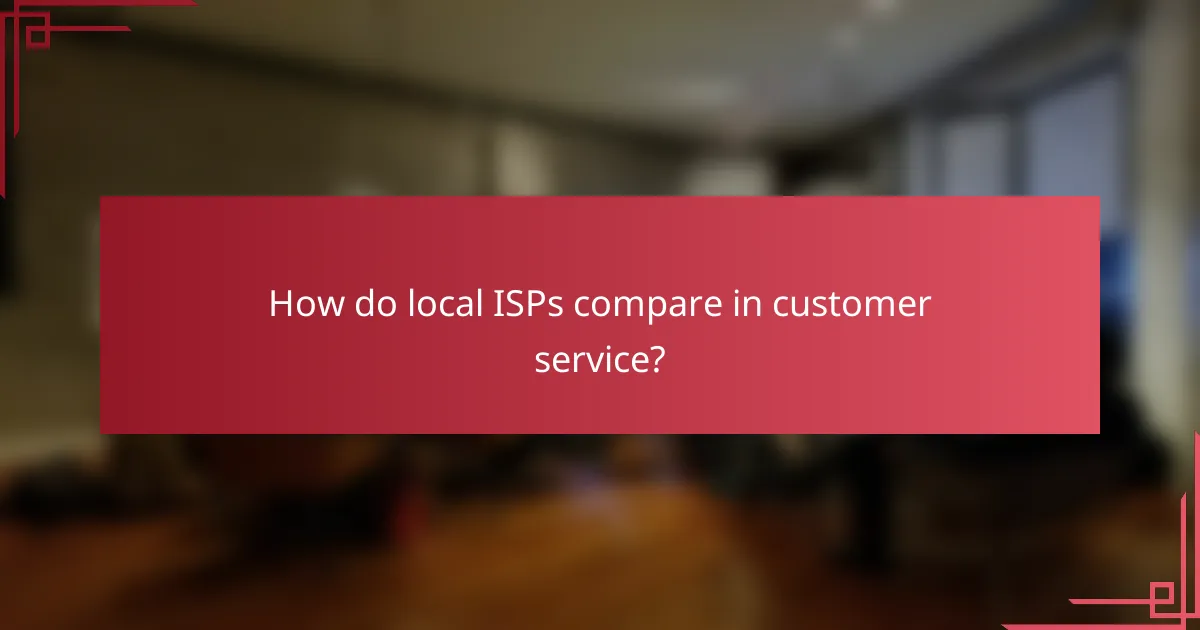
How do local ISPs compare in customer service?
Local ISPs vary significantly in customer service quality, impacting user satisfaction and retention. Evaluating these differences involves examining customer feedback, service response times, and overall support effectiveness.
Evaluation Criteria
When comparing local ISPs, key evaluation criteria include response time, resolution effectiveness, and customer satisfaction ratings. Response time refers to how quickly a customer can reach support, while resolution effectiveness measures how well issues are resolved on the first contact. Customer satisfaction ratings often come from surveys and reviews, providing insight into the overall experience.
Consider using online review platforms to gauge customer feedback and ratings. Look for ISPs that consistently score well across these criteria, as this often indicates a reliable service provider. A good benchmark is to find ISPs with first contact resolution rates above 70% and average response times under 10 minutes.
Customer Feedback
Customer feedback is crucial for understanding the strengths and weaknesses of local ISPs. Many customers share their experiences through online reviews, social media, and community forums. Positive feedback often highlights prompt service and knowledgeable representatives, while negative comments may focus on long wait times or unresolved issues.
To gather a comprehensive view, check multiple sources of feedback, including consumer advocacy websites and local community groups. Look for patterns in the comments; consistent issues across many reviews can indicate systemic problems within an ISP’s customer service.
Trends
Recent trends in ISP customer service show a growing emphasis on digital support channels, such as live chat and social media. Many ISPs are investing in technology to improve response times and streamline the customer experience. This shift reflects a broader consumer preference for quick, accessible support options.
Additionally, there is an increasing focus on personalized service. ISPs that leverage customer data to tailor their support are often rated higher in satisfaction. Keep an eye on these trends when evaluating potential ISPs, as they can significantly impact your overall experience.
